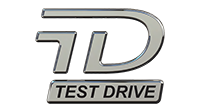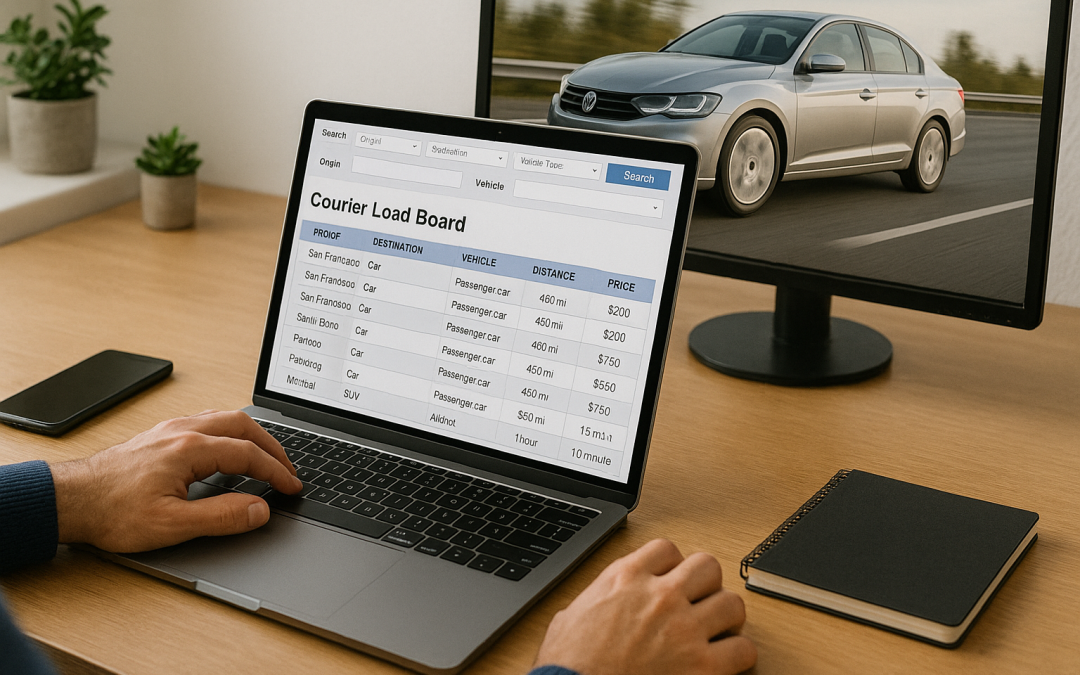Courier load boards for cars promise quick access to capacity. You can post a vehicle move, get bids, and line up a hauler in hours. For many shippers, this feels like a simple answer to a messy problem.
If you manage a network of vehicles, though, load boards are just one piece of a bigger freight strategy. Used well, they help you find options. Used alone, they can create risk, rate volatility and hidden cost. This guide walks through where courier load boards for cars fit and when a transparent freight broker is the better tool.
What Are Courier Load Boards For Cars
Courier load boards for cars are online marketplaces. Shippers, dealers, auctions and brokers post vehicle moves. Car haulers and independent couriers search those listings and offer to move the units. It is the car hauling version of the familiar freight load board.
Some platforms focus only on vehicles. Central Dispatch, for example, is built around auto transport and supports dealers, auctions, manufacturers and transport brokers. Others, like DAT and Truckstop, are general freight boards that also list car hauler loads alongside dry van, reefer and flatbed freight.
On most courier and car hauler load boards you will see:
- Origin and destination
- Vehicle details, including running or non running
- Pickup and delivery windows
- Pay, payment terms and sometimes fuel or accessorial notes
- Basic contact information or in platform messaging
The core idea is always the same. Make it easy for someone who needs a car moved to find someone with the right truck and trailer.
Who Uses Car Courier And Auto Transport Load Boards
Two groups lean on these platforms.
First, carriers and couriers. Hot shot operators and small car hauling fleets use load boards to build lanes, fill backhauls and avoid deadhead miles. A new carrier with a three or four car trailer can cover their truck payment by stitching together board loads while they work on direct accounts.
Second, shippers. Dealers use boards to move trades between rooftops. Auction partners use them to clear sale lanes. Rental and leasing fleets use them to reposition units between markets. Individuals use them to move a single car, often with the help of a broker or marketplace front end.
Example: Dealer Transfers On The Board
Picture a regional dealer group with stores in Dallas and Houston. They move small volumes of used vehicles each week between rooftop inventories. At first they post each run on a car hauler load board and take the best reasonable bid. This works for a while, especially when volumes are low and lanes are irregular. As weekly volume rises, the time spent quoting, checking carriers and chasing updates grows fast. At that point, they need something more structured.
How Courier Load Boards For Cars Work
Posting And Searching Loads
When you post a car or batch of cars to a board, you usually enter:
- Origin and destination, sometimes with a radius
- Number of vehicles, type, size and running status
- Pickup date range and required delivery window
- Offer rate or rate range
- Notes on enclosed vs open, key handling and special conditions
Carriers then search by:
- Lane or region
- Equipment, such as single car hot shot vs nine car stinger
- Dwell time and distance
- Pay, either per car or for the full load
Many boards let carriers set alerts when loads appear that match specific criteria. Others show suggested loads when trucks are posted as “empty near this area”.
Bidding, Booking And Communication
Some courier load boards run on bids. You post the move, carriers submit offers, and you pick a winner. Others allow book now at a visible rate. Auto transport marketplaces often work this way.
Once a load is agreed, communication usually moves into messaging inside the platform, phone or a dispatch app. Documents, photos and proof of delivery sit there as well. That makes it easier to track status, although not every system pushes clean data into shipper TMS tools.
Payments And Dispute Handling
Most car hauler load boards do not pay carriers directly. They connect the parties and the carrier invoices the posting party. Some tools layer in quick pay or factoring. Others partner with factoring companies that specialize in hot shot and auto hauling.
When there is a dispute over damage or late delivery, there is often limited mediation. The platform may have guidelines but will expect the parties and insurance providers to work it out.
Example: One Off Retail Move
An individual buyer wins a car at an out of state auction. They go through a consumer auto transport marketplace that rides on top of a load board. The marketplace posts their car behind the scenes, sources a carrier, and manages the booking. The buyer sees a single all in price, but not the underlying board rate or carrier details.
Key Features To Look For In Car Courier Load Boards
Most top ranking guides stress the same cluster of features.
- Advanced filters. You want to slice by lane, equipment, load size, ready time, and pay.
- Real time updates. Good boards refresh often and push alerts for new suitable loads.
- Mobile support. Drivers need to see and book loads on the road without a laptop.
- Ratings and credit tools. Broker reviews, days to pay and safety indicators reduce risk when you are the one hauling the car.
- Rate analysis. Historical lane averages and current market trends help both sides avoid wild outliers.
- Integrations. TMS and dispatch connections keep auto moves visible alongside FTL, LTL and other freight.
For a logistics manager, those features matter, but they do not replace core questions. Who is the carrier. How safe are they. How stable are the rates on this lane. That is where the gap opens between car courier load boards and a transparent freight broker.
FAQ: Courier Load Boards For Cars And Freight Brokers
Are courier load boards for cars safe for shippers to use directly
They can be, if you treat them as one sourcing channel and still follow a strict vetting process for authority, insurance and safety. The risk comes when rate and speed displace those checks.
What is the difference between a car hauler load board and a general freight load board
Car hauler boards and auto marketplaces focus on vehicle moves and often add vehicle specific filters and tools. General freight boards list all kinds of freight, including car loads, but are not built only for auto.
Do courier load boards for cars work with brokers or only carriers
Most boards are open to both carriers and brokers. Many auto moves posted by “shippers” on consumer sites actually come from brokers working behind the scenes.
Can I see the carrier name and rate when I work with a freight broker
With a transparent, low fixed margin freight broker, yes. That is the point. You should see who is hauling, what they are paid and what the broker earns, so you can judge value.
When does it make more sense to engage a transparent freight broker instead of posting my own loads
Once you have repeat lanes, meaningful volume or high service risk, a broker with vetted fleets, lane scorecards and fixed margin pricing usually beats a pure load board approach on cost stability and performance.
To request a transparent quote or learn more, visit 1fr8.broker.
(For an external perspective on how load boards influence auto transport strategy, you can review independent comparisons of car hauler boards from FreightWaves Ratings and similar industry outlets.)


